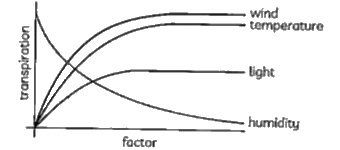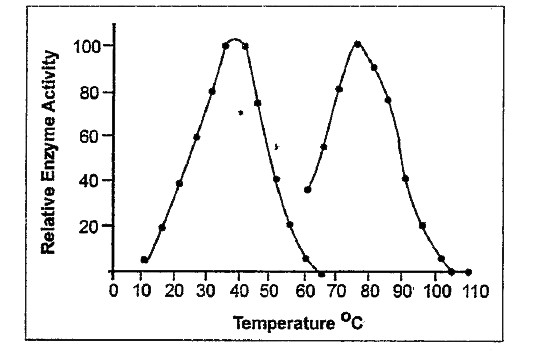Comment on the following statements.
(a) Evaporation produces cooling.
(b) Rate of evaporation of an aqueous solution decreases with increases with increase in humidity .
(c) Sponge though compressible is a solid.
Step by step video & image solution for Comment on the following statements. (a) Evaporation produces cooling. (b) Rate of evaporation of an aqueous solution decreases with increases with increase in humidity . (c) Sponge though compressible is a solid. by Physics experts to help you in doubts & scoring excellent marks in Class 12 exams.
Updated on:21/07/2023Topper's Solved these Questions
- HEAT AND THERMAL EXPANSIONBOOK - PHYSICS GALAXY - ASHISH ARORACHAPTER - HEAT AND THERMAL EXPANSIONEXERCISE - CONCEPTUAL MCQs SINGLE OPTION CORRECT
15 Videos
- HEAT AND THERMAL EXPANSIONBOOK - PHYSICS GALAXY - ASHISH ARORACHAPTER - HEAT AND THERMAL EXPANSIONEXERCISE - NUMERICAL MCQs SINGLE OPTIONS CORRECT
81 Videos
- HEAT AND THERMAL EXPANSIONBOOK - PHYSICS GALAXY - ASHISH ARORACHAPTER - HEAT AND THERMAL EXPANSIONEXERCISE - PRACTICE EXERCISE
40 Videos
- GEOMETRICAL OPTICSBOOK - PHYSICS GALAXY - ASHISH ARORACHAPTER - GEOMETRICAL OPTICSEXERCISE - Unsolved Numerical Problems
107 Videos
- HEAT TRANSFER BOOK - PHYSICS GALAXY - ASHISH ARORACHAPTER - HEAT TRANSFER EXERCISE - Unsolved Numerical Problems for Preparation of NSEP,INPhO&IPhO
66 Videos
Similar Questions
Knowledge Check
Rank the following reactions A, B and C in order of increasing rate
(A) AB>A>CBB>C>ACA>B>CDA>C>B
AB>A>CBB>C>ACA>B>CDA>C>BA plot of various abiotic factors affecting the rate of transpiration is given below :

After analyzing the graph a student writes the following statements
(I) The rate of transpiration increases with increase in light intensity, wind speed and humidity
(II) The rate of transpiration decreases linearly with increases in light intensity , temperature and humidity
(III) The rate of transpiration decreases with increase in humidity
(IV) The rate of transpiration increases with increase in light intensity, temperature and humidity
Choose from the following which of the following would be the correct statements (s)AOnly (I)BOnly (II)COnly (III)DBoth (I) and (IV)Consider the following statements :
(I)An increase in pressure (caused by decrease in volume) at equilibrium results in increase in molar concentration of each gasous substances involved.
(II)An increase in pressure (caused by decrease in volume) at equilibrium results in increase in no. of moles of each gaseous substance involved.
(III)For the reaction A(s)⇔B(g)+C(g) at constant temperature, total pressure at equilibrium (of B(g) & C(g)) is not affected by changing the volume of container.
(IV)H2O(l)⇔H2O(g) on temperature increase K of this reaction is increased.
Tick the correct statement(s)A(I)B(II)C(III)D(IV)
_______in humidity increases rate of evaporation.
View Solution500mL of 0.2M HCN solution is diluted to 1 litre.Which of the following statement(s) is/are correct (Ka of HCN =2×10−10)
(A) pH of solution increases.
(B) pH of solution decreases.
(C) Increase in degree of dissociation of HCN increases H+ ion concentration.
(D) Decrease in concentration of solution compensates increase in degree of dissociation to decrease H+
View SolutionWhich one of the following statements is wrong?
a. Physical adsorption of gas directly related to its critical temperature.
b. Chemical adsorption decreases regularly as the temperature is increased.
c. Adsorption is an exothermic process.
d. A solid with a smooth surface.
View SolutionFor capacitors charged by the same battery, does the charge stored by the capacitor increase , decrease or remain the same in each of the following situations? (a) the plate separation of a parallel plate capacitor is increased b) the radius of the inner cylinder capacitor is increased (c ) the radius of the outer spherical shell of a capacitor is increased.
View SolutionThe following graph depicts the effect of temperature on the activity of the two enzymes A and B that catalyze the same reaction. Choose the correct statement(s) for these results.

A. The rate of reaction in each case increases with increase in temperature and declines at higher temperatures due to denaturation of the enzyme.
B. Both the enzymes A and B are thermolabile.
C. At higher temperature, the reactants become highly energized and fail to interact with the active site, thus decreasing the rate of reaction.
D. The enzyme A is from a mesophilic organism, whereas the enzyme B is from a thermophilic organism.
View Solution
